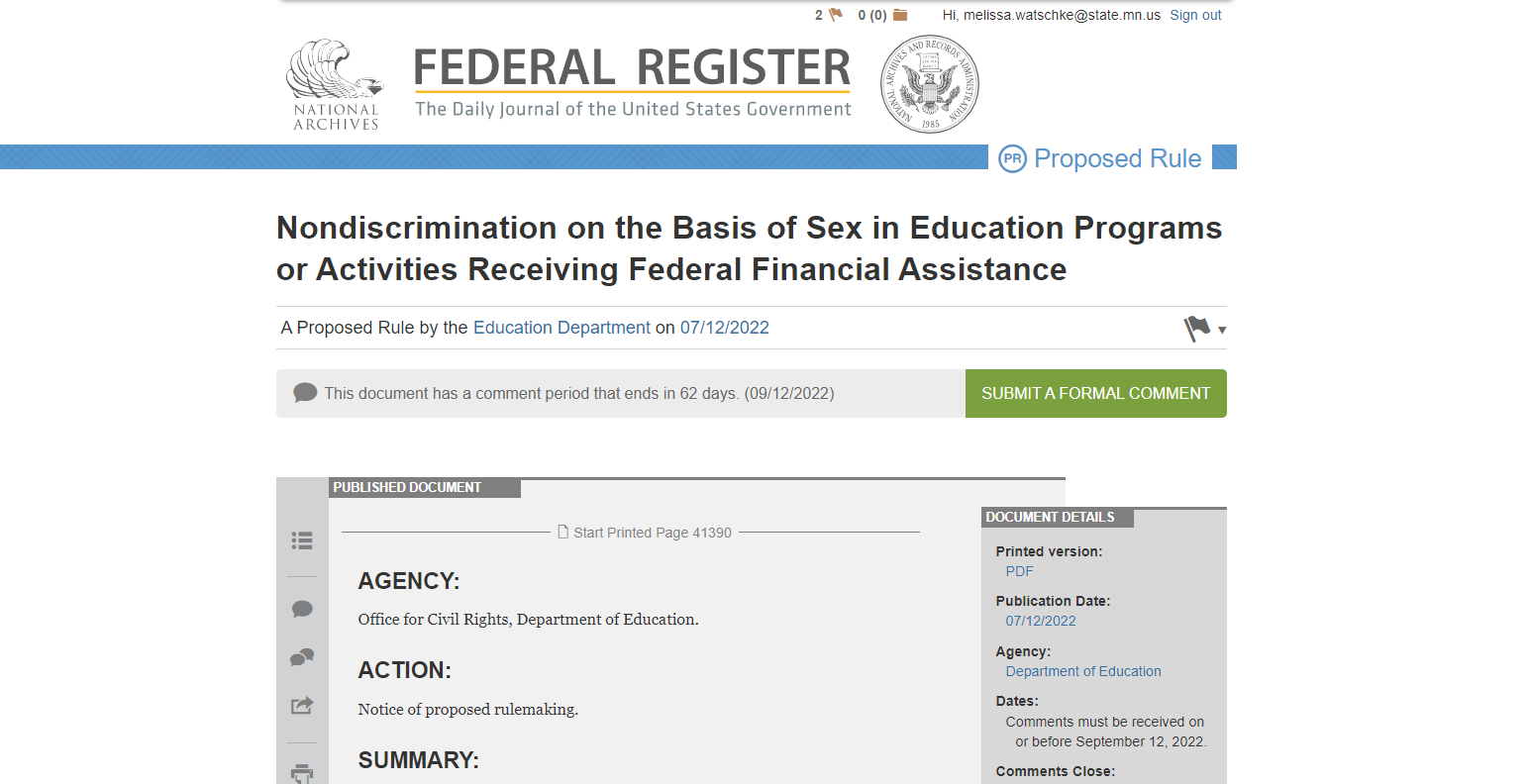On April 6, 2023 The Office of Civil Rights Department of Education released a Notice of Proposed Rulemaking (NPRM) that addresses the eligibility to participate in male or female specific athletic programs based on a student's gender identity. The NPRM was published in the Federal Register April 13. There will be a 30-day public comment period, which ends May 15, 2023.
The NPRM contains some examples of case law and OCR settlements that illustrate when sex-based criteria is permissible under Title IX and when it is not.
The Office of Higher Education does not interpret the changes or make inferences of the effects of the proposed changes.
This provision is listed under §106.41(b) of Title IX of the amendments act. To consider sex-based criteria that denies or limits a student's participation in a male or female athletic team consistent with their gender identity, an institution must "adopt or apply" an analysis for each sport in the following areas
Total bans of participation on the basis of gender identity appear to be a violation of Title IX, especially if an institution does not complete an analysis based on the criteria listed above.
Go to Regulations.gov



